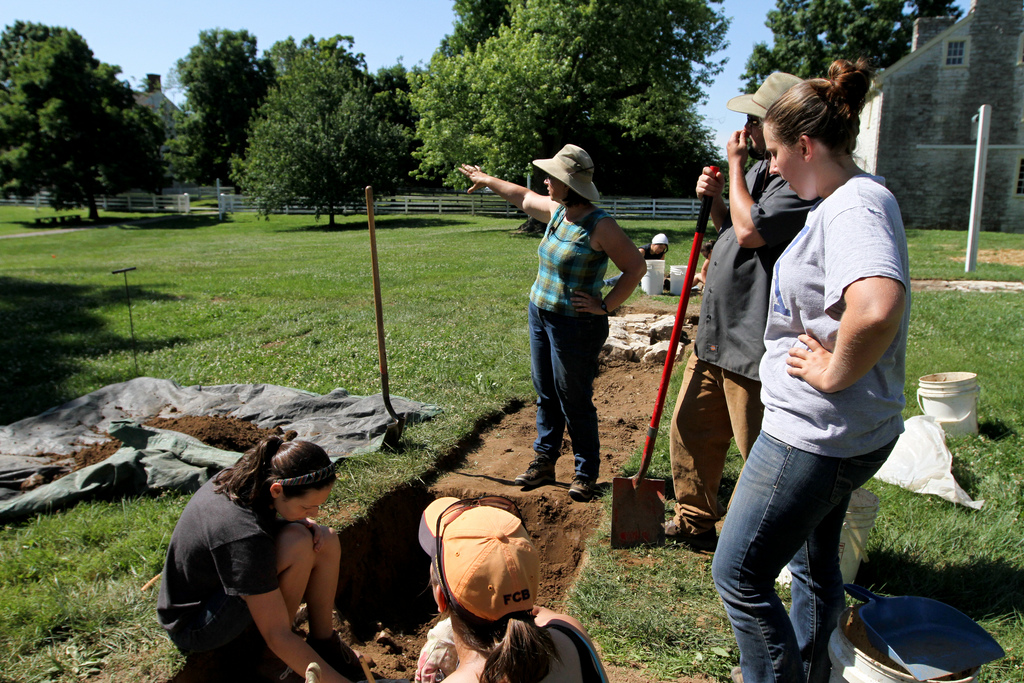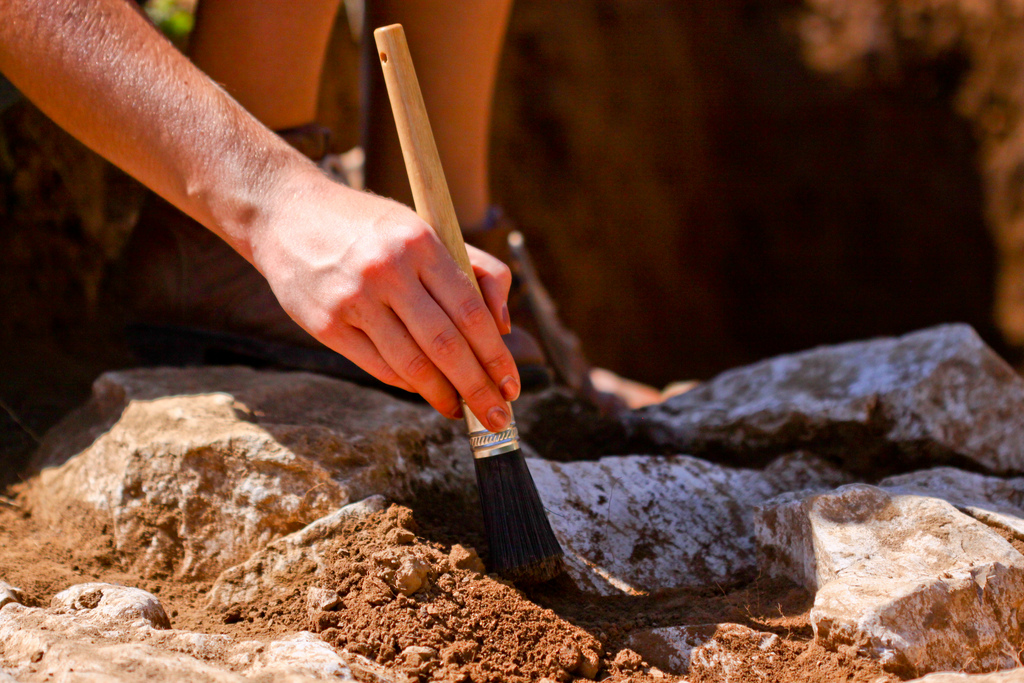by Sarah Geegan
 Adjunct Anthropology Professor Kim McBride's 22 years of archaeological work at Pleasant Hill, a former Shaker community approximately 30 miles southwest of Lexington, was recently featured in the national publication, American Archaeology magazine.
Adjunct Anthropology Professor Kim McBride's 22 years of archaeological work at Pleasant Hill, a former Shaker community approximately 30 miles southwest of Lexington, was recently featured in the national publication, American Archaeology magazine.
The magazine's seven-page feature highlights McBride's extensive work at Pleasant Hill, which includes directing a series of field schools in which more than 100 students have located former building sites throughout the village. Throughout these excavations, McBride, co-director of Kentucky Archaeological Survey, and her students have created a more complete picture of how Pleasant Hill once appeared.
"Our work can help the visitors of Pleasant Hill understand what used to be there," McBride said. "For example, a big humped up area in the ground — if you were an archaeologist, you would know that there used to be a building there, but lot of people wouldn’t. Now you can see the whole foundation, and there will be a sign explaining that a building used to stand here."
McBride began locating and excavating the foundations of buildings that were no longer visible in 1990. Structures like the first meeting house, an outdoor worship area used for religious ceremonies, and the home of Elijah Thomas, where the Shakers first settled, played an integral role in the development of the Shaker society. After locating and studying these foundations, McBride's research began to center on another integral factor in the Shaker community.
“Over time I’ve come to personally focus on this sense of order of the village,” she said. “From what I have read about many other communal societies, most grew in a more haphazard way, not as explicitly planned as Shaker communities.”
McBride used her knowledge of the Shaker's emphasis on order to locate several of the buildings' foundations.
"When you look at the layout of the village, all of the buildings line up with each other," McBride said. "We have used that knowledge to predict and confirm the locations of other buildings' foundations."
Last spring, McBride led her most recent archaeology field school course, which consisted of 14 UK anthropology students and lasted six weeks. The students primarily focused on pinpointing the exact location and dimensions of an 1810 Meeting House and an 1812 Centre Family dwelling, by locating and unearthing the corners of the buildings' stone foundations. The students' findings were also featured in the article.
Their findings include a bone button, blank pieces of animal bone that could attest to button manufacturing, a glass bead and a clay marble at the Meeting House, as well as a thimble and a spool for thread at the Centre Family house, among other artifacts.
Archaeology field school student Jacob Welch said he was very thankful for the experience he gained at Pleasant Hill.
"Participating in the Shaker Village Field School was an incredible experience, and having been featured in a national publication was awesome," Welch said. "Furthermore, it was through this field school and learning the many archaeology techniques that I was able to succeed in another project I joined this summer in Honduras."
McBride said she was very pleased to have gained national recognition for her work and the work of her students.
"My research at Pleasant Hill would not have been possible without collaboration with the dedicated staff there, especially curator Larrie Curry," she said.
For more information about McBride's most recent field school course at Pleasant Hill, click here.
To view a photo album of the students at work at Shaker Village, click here.
